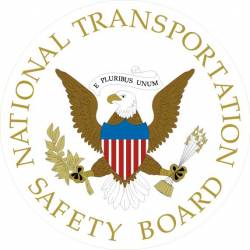
In a Tuesday (July 23, 2013) hearing on two fatal school bus/truck collisions, the National Transportation Safety Board (NTSB) recommended adoption of “connected vehicle technology” on all newly manufactured highway vehicles as a way to reduce such accidents.
Such collision-avoidance systems — similar to those used in civil aviation — would typically depend on real-time transmissions of the GNSS-derived locations of nearby vehicles to provide enhanced “situational awareness” to drivers.
In a Tuesday (July 23, 2013) hearing on two fatal school bus/truck collisions, the National Transportation Safety Board (NTSB) recommended adoption of “connected vehicle technology” on all newly manufactured highway vehicles as a way to reduce such accidents.
Such collision-avoidance systems — similar to those used in civil aviation — would typically depend on real-time transmissions of the GNSS-derived locations of nearby vehicles to provide enhanced “situational awareness” to drivers.
Primary focus of the hearing was a Thursday, February 16, 2012, accident near Chesterfield, New Jersey, in which a school bus with 25 elementary students entered an intersection, failed to yield to an on-coming truck, and was struck behind the left rear axle. One bus passenger was killed and five others sustained serious injuries. (An animated recreation of the accident can be seen here.)
“Effective countermeasures are needed to assist in preventing intersection crashes, for example, systems such as connected vehicle technology could have provided an active warning to the school bus driver of the approaching truck as he began to cross the intersection,” an NTSB report on the accident stated. “Although the bus driver was adamant in his post-crash interview that he had pulled forward sufficiently to see clearly in both directions, he failed to see the oncoming truck and proceeded into its path.”
The U.S. Department of Transportation’s Research and Innovative Technology Administration (RITA) is working with automotive industry leaders on a connected vehicles program, Crash Avoidance Metrics Partnership (CAMP).
The NTSB recommended that the National Highway Traffic Safety Administration “develop minimum performance standards for connected vehicle technology for all highway vehicles” and, once minimum performance standards for connected vehicle technology are developed, “require this technology to be installed on all newly manufactured highway vehicles.”
The board’s recommendations are only the latest indication of its growing interest in driver-assistance systems, including location technology, to prevent traffic fatalities. In a Special Investigation Report on Wrong-Way Driving adopted December 12, 2012, the NTSB recommended that the Society of Automotive Engineers (SAE) International work with the Alliance of Automobile Manufacturers, global automakers, and the Consumer Electronics Association, as well as major GPS industry representatives and stakeholders, to develop standards for GPS wrong-way navigation alerts.
While acknowledging that only three percent of accidents involved wrong-way driving, the report emphasized the high percentage of fatalities that occur in the resulting head-on collisions.
The reported suggested that the place to begin was at freeway on-ramps. In a section on Wrong Way Navigation Alerts on Vehicles, the NTSB report observed that “available navigation systems can recognize when a motor vehicle is entering an exit ramp on a controlled-access divided highway. For situations involving wrong-way traffic movement, GPS systems could inform the driver of a turn into oncoming traffic.”
Although such information about driver error would be useful in all cases, informing drivers of entry into an interchange exit ramp “would constitute one of the simplest use cases,” the NTSB said. The direction of travel on ramps is not subject to change as is the case with urban streets, and, in most instances, exit ramps do not have opposite directions of travel located on the same road segment.
The NTSB concluded that “providing navigation system alerts that inform drivers of wrong-way movements onto controlled-access highway exit ramps before they reach mainline traffic could enhance safety.”





